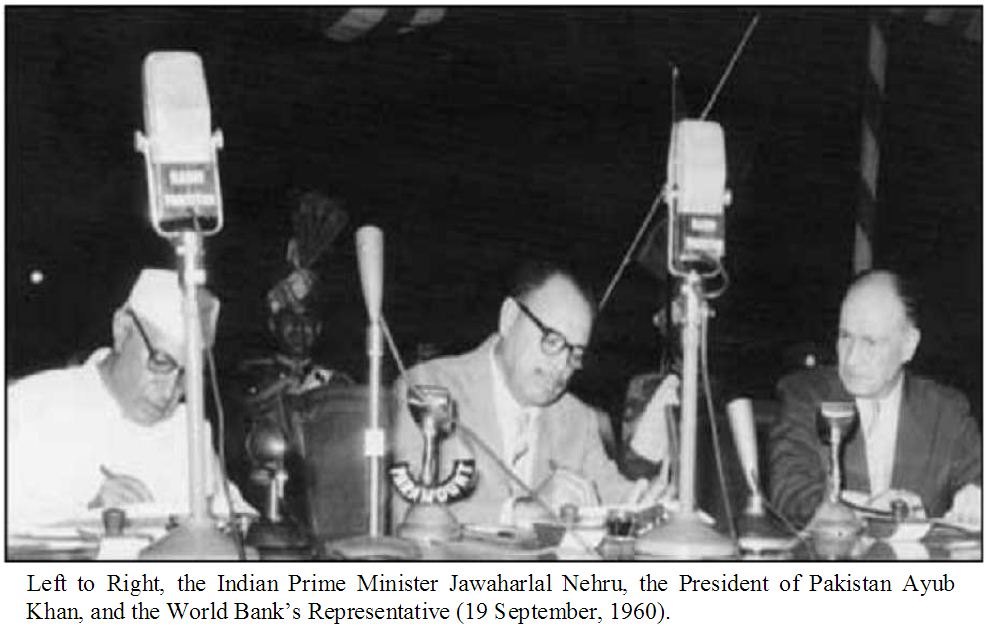In the Annals of International Relations, few agreements have been able to resist the proof of time and conflict such as the Treaty of the Water (IWT).
The treaty, signed in 1960 between Pakistan and India, managed to endure wars, political disorders and decades of fragile relationships between the two nations with border nuclear weapons.
The IWT has demonstrated its strength to be a lighthouse of resistance and hope in Indo-Pak relations.
However, this resistance symbol faces its most crucial moment, since India has decided to unilaterally suspend the Treaty of the Indo’s waters after a deadly terrorist attack against Indian tourists in the Pahalgam region of Jammu and Pahalgama Kashmir.
Genesis of a life line
Indo is not just a river, it is an identity. An identity of millions whose life depends on its flow and consumption. The river is prior to the formation of both states and has historical value.
This helps maintain agriculture, sustenance and ecosystems in Pakistan and India. Originated in the Tibet, the river crosses the disputed region of Jammu and Kashmira, which flows to Pakistan and finally empties in the Arabic sea.
According to climate diplomacy, approximately 90% of Pakistan food production is linked to agriculture and animal breeding, which depend on the Indo River. The Indo also helps in irrigation networks in the provinces of Punjab and Sindh.
Water relations before IWT
India and Pakistan did not have the shared water treaty before the formation of the Indo Water Treaty. The limit commission, headed by Sir Cyril Radcliffe, did not make any serious effort to establish a water exchange agreement between India and Pakistan; Instead, he opted for the newly created states to solve the problem themselves.
Water policy was not a cause of concern in the first days of the partition, but the problem stood out when the province of East Punjab cut the water supply to the province of Western Pakistan Punjab in April 1948, culminating towards an aquatic crisis for Pakistan.
India’s actions caused the need to form a structured water treaty between the two nations, which could guarantee the Pakistan water supply of the Indo.
The emergence of the Indo Water Treaty
The Treaty of the Water of the Indo was not formed on a work day, he took years of technical, diplomatic and political experience for his training. The treaty was initially signed on September 19, 1960 in Karachi.
Pakistan was represented by its president Mohammad Ayub Khan and India by his Prime Minister Jawaharlal Nehru, with the World Bank (then known as the International Bank for Reconstruction and Development) that acts as a mediator and corridor of the Treaty.
The treaty survived three important wars and decades of diplomatic tensions and political agitation until India decided to suspend it unilaterally.

Outstanding characteristics of the IWT:
The treaty includes a preamble, 12 articles (I-XII) and eight annexes. The treaty is binding between their parties (Pakistan and India).
-
Article II gives India’s exclusive rights over the Eastern rivers of the Indo (Ravi, Sutlej, Beas)
-
Article III grants Pakistan rights over the Western rivers (Indo, Jhelum and Chenab) of the Indo.
-
Article XII (4) establishes that the provisions of the Treaty will continue in force until a properly ratified treaty concluded for that purpose between the two governments ends.
-
Article VIII establishes the Permanent Indo Commission.
-
Article IX provides a mechanism to solve disputes and differences between the parties.
TIME LINE: Key events in the history of the Indo Water Treaty
| Year / date | Event |
|---|---|
| 1947 | British India partition |
| April 1, 1948 | Water retention begins |
| May 4, 1948 | Provisional agreement |
| 1951 | Pakistan approaches the UN |
| 1960 | Signed treaty |
| 1965 | Indo-Pak War |
| 1971 | Indo-Pak War |
| 1999 | Kargil war |
| 2001 | India Parliament Attack |
| 2008 | Mumbai attacks |
| 2016 | URI attack |
| 2019 | Pulwama attack |
| 2019 | THE SPECIAL STATE OF REVOCATO BACHEMIRA |
| 2025 (April 23) | Pahalgama attack |
The fall of the Indo Water Treaty?
The rupture point for the treaty came with the tragic attack in the Pahalgam region of Iiojk, which resulted in the death of more than two dozen tourists.
India, without launching any formal investigation or presenting any evidence, accused Pakistan of facilitating the attack, labeling it as an act of cross -border terrorism.
Despite the condemnation of the attack by Pakistan, India suspended the IWT, marking a significant deviation of decades of successful water diplomacy.
However, despite the unilateral actions of India, the provisions of the treaty suggest measures for the termination or suspension of the treaty and a state mechanism to resolve disputes between the signatories.
Several experts and diplomats, including Abdul Basit, the former High Commissioner from Pakistan to India (2014-2017), believe that there are no immediate diplomatic problems for Pakistan, especially with respect to the cancellation of the Indo Water Treaty.
In the long term, the suspension of India will have devastating consequences for Pakistan, which already faces the insecurity of water.
Indo helps Pakistan maintain his agriculture and economics. It is also deeply integrated in the cultural, historical and spiritual identity of Pakistan, especially in Sindh. The I in Pakistan significantly denotes the Indo and is mentioned in the popular traditions of the country, Sufism and Music.
The treaty maintained its importance to be one of the most successful water treaties in the world despite the fragile Indo-Pak relations.
As tensions between India and Pakistan increase, safeguarding the Indo and the IWT remains vital not only for the stability of Pakistan, but for the preservation of a shared heritage that transcends the borders.




